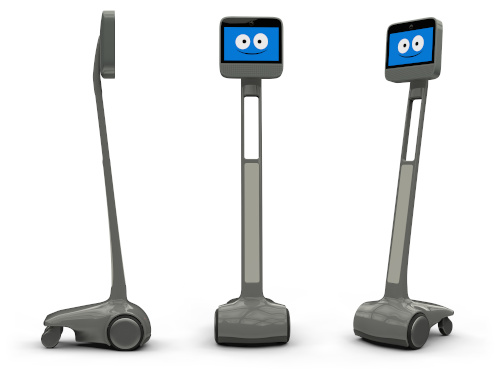When you hear the word ‘robot,’ what comes to mind?
Off the bat, it’s probably either a hyper-realistic robot that can’t be distinguished from a human that sets out to take over the world, or ‘Disneyfied’ robots such as C-3PO and WALL-E that have been created for our entertainment. Today, however, their potential impact is more far-reaching. Robots are being built to improve daily tasks and improve our lives. Think about the Roomba vacuum, robotic arms for complicated surgeries, or Tesla’s self-driving car–all are setting a powerful precedent for new ways of living and being.
Education is another sector where robots are proving to be of valuable assistance. Conventional classrooms can become stagnant, often to the detriment of students’ learning experiences. That’s why telepresence robots can offer promising solutions for educators globally to empower engaged learning experiences and catalyze effective learning techniques inside and outside the classroom.
Here are five examples demonstrating how robots are being used to modernize classrooms and provide differentiated learning experiences.
1. Make the hybrid classroom a community
If this past year of quarantining and sheltering-in-place has taught us anything, it’s the value of in-person relationships and human connections. This situation is particularly pertinent in education, where bonds formed with teachers and classmates can profoundly impact students’ engagement, attainment, and life choices. Unfortunately, however, as we saw during the pandemic, in-person learning is not always feasible.
As we emerge from the restrictions, many schools have adopted hybrid learning models with a reduced classroom capacity, instating distance learning. Unfortunately, this arrangement can leave some students feeling left out or unmotivated. With the power of robots for learning, students can simulate core aspects of the school day experience from any web-based device–and have complete control of the process. Whether ‘driving’ their robot into the classroom or attending class behind a virtual desk to engage in a discussion, robots can help remote students feel like they are still part of the school community.
2. Include homebound or hospitalized students in real time
Before online school became the norm, many children had experience with remote school due to illnesses, hospitalizations, or other medical reasons. Often, these students had to work on the material independently, with their families, or with private tutors. While these ‘solutions’ may have allowed students to keep up with academic work, they couldn’t help students learn how to socialize and build camaraderie with peers and instructors.
Telepresence robots offer a solution to bring the school community to students who can attend in person. When individuals attend school via their educational robot, they can participate in class, maintain relationships, and build friendships. For teachers, telepresence robots save time and eliminate the need for teachers to create multiple curricula tailored to individual students. Furthermore, families or individuals now don’t have to spend additional fees on outside tutors to help their students catch up.
3. Invite experts to speak directly to students
Robots in schools are not just for students’ use; they also offer classrooms a way to connect to the world around them like never before. Hearing from experts in a field can ignite previously unknown or unimaginable interests and motivate students to put their ideas into action. Of course, we can watch their videos or read their material, but passive interactions can’t compare to personal conversations.
When an expert makes a video call via a robot, he or she seems more like a live person. The speaker has complete agency and control over their movements. And the best part is, these expert speakers don’t have to leave the comfort of their own homes.
4. Go beyond the classroom walls
As we saw during the pandemic, places we took for granted, such as museums, offices, and even parks, were suddenly closed to us. Confined to our own homes, we longed for the ability to return to these locations. Now, we can now take advantage of these spaces in a personal way without compromising our health. Using educational robots, classes can be escorted around their local learning sites or even brought to places thought inaccessible before, such as national museums on the other side of the country or historical landmarks in other states.
Additionally, the portability of many telepresence robots allows students to travel with their class outside the school. At only 20 pounds, some robots can be folded over and carried by hand or put in any car or bus. Furthermore, most robots don’t require reassembly, making them incredibly easy to bring students anywhere they want to go.
5. Quality check classrooms and facilities virtually
If teachers cannot come to work–whether they’re out sick, traveling, or unavailable for another reason–using a telepresence robot offers them an easy solution for school administrators and others to check on classrooms without disrupting their schedules.
This is a great strategy that goes above and beyond most educators’ initial reasons for purchasing the robot, illustrating its multifaceted value.
- 4 ways to encourage play in education - April 25, 2024
- CoSN IT Leader Spotlight: Lisa Higgins - April 25, 2024
- It’s time to pay student teachers - April 25, 2024


